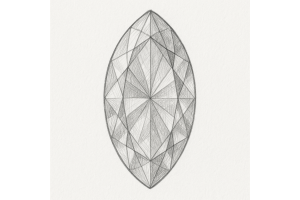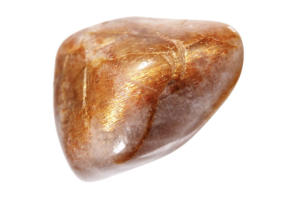GBP
/
GBP
/
Shipping to:
Currency:
In the ever-evolving world of jewellery, lab grown diamonds are becoming the go-to choice for those seeking a luxurious yet ethical option.
With concerns about sustainability and affordability shaping modern consumer behaviour, lab grown diamonds offer the perfect balance of style, quality, and responsibility.
Whether you're shopping for an engagement ring or a timeless piece of jewellery, lab grown diamonds represent a new era in affordable luxury.
Let’s explore how these gems are redefining the jewellery landscape and why they’re the ideal choice for ethical shoppers.
What Defines Affordable Luxury?
When we think of luxury, high-end designer brands and exorbitant price tags often come to mind.
However, in recent years, the concept of "affordable luxury" has taken root, offering consumers a way to enjoy premium quality without emptying their wallets.
Affordable luxury is all about achieving that perfect blend of craftsmanship, elegance, and value.
Lab grown diamonds fit into this category seamlessly, offering all the beauty and prestige of natural diamonds but at a fraction of the cost.
For those curious about exploring more options, check out lab grown diamonds, where affordability meets luxury.
The Rise of Lab Grown Diamonds in the Jewellery Market
Lab grown diamonds are not a fleeting trend.
Over the past decade, these diamonds have grown from a niche product into a significant player in the jewellery market.
Advances in technology have made it possible to create diamonds in a controlled environment, with the same chemical and physical properties as natural diamonds.
This technological innovation has allowed jewellers to produce diamonds more efficiently, reducing costs and making luxury more accessible.
If you’re considering purchasing diamonds directly from a trusted source, explore wholesale diamonds for top-tier diamonds at great prices.
Lab Grown Diamonds vs. Natural Diamonds: A Price Comparison
One of the most compelling reasons to choose lab grown diamonds is the cost savings they offer.
Lab grown diamonds can be up to 30-40% less expensive than their natural counterparts.
This price difference doesn’t mean sacrificing quality.
Lab grown diamonds are identical in terms of their chemical composition, clarity, and sparkle.
For many buyers, the lower price point of lab grown diamonds means they can afford a larger carat size or a higher quality diamond within their budget.
For those who love variety, check out fancy coloured lab grown diamonds to explore colourful options within your price range.
Ethical Benefits of Choosing Lab Grown Diamonds
For ethical shoppers, lab grown diamonds are the ultimate choice.
Traditional diamond mining has long been associated with environmental degradation, conflict, and exploitation.
While many efforts have been made to improve the industry, concerns about ethical sourcing still linger.
Lab grown diamonds provide a clear solution to these issues.
Environmentally, lab grown diamonds have a much smaller footprint.
Mining can destroy ecosystems and consume vast amounts of water and energy.
In contrast, lab grown diamonds are created in a controlled laboratory setting, using less energy and generating fewer emissions.
They also remove the concern of "blood diamonds," which are mined in war zones and sold to finance conflicts.
By choosing lab grown diamonds, you’re supporting a more sustainable and ethical industry, without compromising on the beauty and quality of your jewellery.
To learn more about lab grown diamonds and their positive impact, explore lab grown diamonds for an ethical, luxurious choice.
Quality and Aesthetic Appeal: No Compromises on Beauty
One of the most common misconceptions about lab grown diamonds is that they are somehow inferior to natural diamonds.
This couldn’t be further from the truth.
Lab grown diamonds are chemically and physically identical to natural diamonds.
In fact, even professional jewellers often find it difficult to tell the difference without specialised equipment.
Lab grown diamonds are available in all the classic cuts, from brilliant round to princess, emerald, and beyond.
They offer the same clarity and colour options as natural diamonds, ensuring that you get the same dazzling sparkle.
Whether you’re opting for a minimalist solitaire or a vintage-inspired design, lab grown diamonds deliver the beauty and brilliance you expect from a luxury gemstone.
If you’re interested in specific diamond shapes, check out round lab grown diamonds or princess cut lab grown diamonds for a closer look at their stunning cuts.
Customising Affordable Luxury: Bespoke Lab Grown Diamond Jewellery
One of the joys of choosing lab grown diamonds is the opportunity to create bespoke jewellery without the prohibitive cost.
Custom-made jewellery allows you to express your personal style and create a piece that’s uniquely yours.
From engagement rings to anniversary gifts, bespoke lab grown diamond jewellery can be tailored to your exact specifications.
Many jewellers offer customisation services where you can select the carat size, cut, and setting of your lab grown diamond.
This bespoke service is not just limited to high-end customers.
Thanks to the affordability of lab grown diamonds, more people can access the world of bespoke luxury.
Whether you want a vintage-inspired halo setting or a sleek modern design, lab grown diamonds provide endless possibilities for affordable, personalised luxury.
For customisation inspiration, check out cushion lab grown diamonds for a unique and elegant design.
Celebrity Endorsements and Trends: Lab Grown Diamonds in the Spotlight
Celebrities and influencers are embracing lab grown diamonds, helping to elevate their status in the luxury market.
From Meghan Markle to Leonardo DiCaprio, many high-profile figures are advocating for sustainable and ethical jewellery choices.
These endorsements have played a significant role in shaping consumer preferences, showing that luxury can go hand-in-hand with responsibility.
Lab grown diamonds are also being featured in top fashion and jewellery publications, solidifying their place as a stylish and modern choice.
As the trend towards sustainability continues to grow, lab grown diamonds are becoming synonymous with forward-thinking, conscious luxury.
How to Choose the Perfect Lab Grown Diamond for Ethical Shoppers
When shopping for lab grown diamonds, it’s essential to consider the same factors as you would with natural diamonds: the 4 Cs – carat, cut, colour, and clarity.
These determine the quality and value of your diamond.
Ethical shoppers should also look for reputable jewellers who offer transparent information about their sourcing and manufacturing processes.
Certifications such as IGI (International Gemological Institute) can provide peace of mind that your lab grown diamond meets high standards.
For an elegant and refined option, explore emerald cut lab grown diamonds or pear shaped lab grown diamonds to find the perfect stone.
FAQs
Are lab grown diamonds real diamonds?
Yes, lab grown diamonds are real diamonds.
They have the same chemical composition, structure, and properties as natural diamonds.
The only difference is that they are created in a laboratory rather than mined from the earth.
Do lab grown diamonds lose their value?
Like natural diamonds, lab grown diamonds do depreciate in value over time.
However, they often offer better value for money upfront due to their lower cost compared to natural diamonds.
Are lab grown diamonds ethical?
Lab grown diamonds are considered more ethical than mined diamonds because they have a much smaller environmental footprint and don’t contribute to issues such as conflict or exploitation associated with traditional mining.
Can you tell the difference between lab grown and natural diamonds?
It is extremely difficult to tell the difference between lab grown and natural diamonds with the naked eye.
Even jewellers require specialised equipment to differentiate between the two.
Are lab grown diamonds cheaper?
Yes, lab grown diamonds are typically 30-40% less expensive than natural diamonds.
This price difference is due to the more efficient production process and the absence of mining costs.








